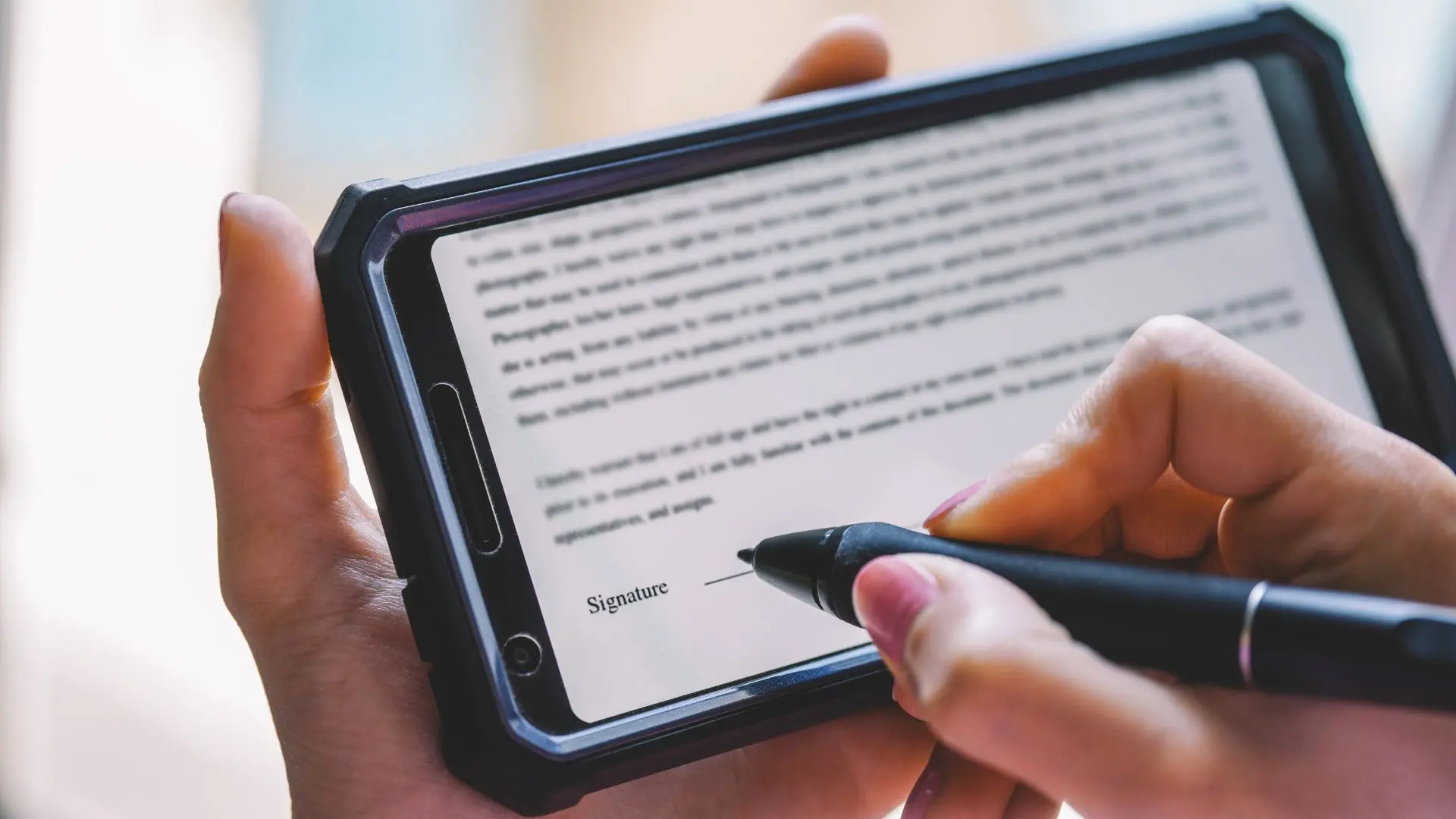With every email you send, you hold the power to influence how recipients perceive you and your message, often without realizing it. Your email signature acts as your digital business card, providing key information about your identity and legitimacy. As you investigate into the world of email signatures, you’ll discover how subtle elements like design, tone, and content can shape responses and even alter your professional image. Join us as we explore the psychological nuances behind these seemingly simple markers of communication and their profound impact on interpersonal connections.
The Power of First Impressions

The Importance of Initial Encounters
The psychology behind first impressions cannot be overstated; they often set the stage for how relationships unfold. You have likely experienced this firsthand in various contexts, whether meeting someone new in person or virtually. From the moment your eyes scan an email signature, your brain begins to form a perception about the sender. This initial encounter is quick, often lasting only a few seconds, yet it carries immense weight. It is during this brief window that you gauge professionalism, credibility, and even personality—all factors that can dramatically influence your response to the email.
Understanding the importance of first impressions can give you the upper hand in your professional communications. If you convey a polished and cohesive image through your email signature, you are more likely to instill confidence in the recipient. Consider how you might feel when you see an email signature that is cluttered or includes outdated information: it’s easy to question the reliability of the sender. You want to ensure that your initial encounter speaks volumes about your attention to detail and professionalism, setting a positive tone for ongoing communication.
How Email Signatures Set the Tone
Email signatures act as a digital handshake, creating an immediate context for your message. An effective email signature is not merely a formality; it encapsulates your brand and personality in a succinct format. The choice of fonts, colors, and layout can subtly influence how others perceive you. You may have noticed how a well-crafted signature can evoke feelings of trust and professionalism, while a poorly designed one can incite skepticism or convey a lack of seriousness. This dichotomy underscores the critical role signatures play in the overarching narrative of your email communication.
It is vital to recognize that the tone set by your email signature can guide the interactions that follow. A signature that is sophisticated yet approachable can encourage the recipient to engage with you in a positive manner, fostering a better relationship. Conversely, an overly casual or chaotic signature might raise barriers, causing the recipient to question your commitment or authority. The impression created by your signature not only reflects on your individual character but also impacts how your entire communication is received, driving home the importance of these small yet mighty details.
The Anatomy of an Email Signature

You might not think much about the email signature you include at the bottom of your messages, but it serves a crucial role in how your communication is perceived. Each component of your email signature is a piece of a larger puzzle that influences the recipient’s response and overall impression of you. A well-crafted signature can boost your professionalism, establish credibility, and even foster a connection with the recipient, setting the stage for more effective communication.
The Role of Names and Titles
Email signatures prominently feature your name and title, and these elements play a vital role in establishing your identity and authority. Your name is often the first thing recipients notice, so it should be clear and prominently displayed. A professional title conveys your expertise and function within an organization, signaling to the recipient what to expect from you. This is particularly important in business communications, where clarity can make or break a professional relationship.
Your title also acts as a psychological cue, influencing the recipient’s perception of your capabilities and qualifications. For example, if you hold a senior position, such as a Director, that title can add a layer of authority to your messages, encouraging the recipient to take your requests more seriously. Conversely, an ambiguous title may make it harder for recipients to gauge your expertise, impacting their willingness to engage further.
The Impact of Logos and Branding
Branding elements, including logos, can significantly enhance the effectiveness of your email signature. When you incorporate your company’s logo, you not only reinforce your brand’s visual identity but also instill a sense of familiarity and trust among recipients. A well-recognized logo can evoke feelings of reliability, especially if the recipient has had positive experiences with your brand in the past. The presence of branding within your signature offers another layer to your communication, turning an ordinary email into a touchpoint that aligns with your organization’s image and values.
This strategic placement of logos encourages a sense of ownership and professionalism that can lead to greater engagement. Recipients are more likely to remember and act on messages from recognizable brands, making your communications stand out in an overcrowded inbox. It’s not just about brand visibility; it’s about building associations that ensure your messages are received in the spirit they were intended.
The Effect of Color Schemes and Fonts
Email signatures are an ideal canvas for you to express your brand’s personality, and color schemes and fonts are central to that expression. The colors you choose not only contribute to your brand’s visual aesthetics but also evoke specific emotions and reactions. For example, a blue font might instill feelings of calmness and trust, while red can generate excitement and urgency. Similarly, the font you select can influence readability and convey different nuances of formality. A sleek, modern font can suggest innovation, whereas a serif font might communicate tradition and reliability.
When used thoughtfully, color schemes and fonts can enhance your brand’s narrative. Your choices should align with the message you want to convey in your communication, creating a cohesive experience for the recipient. Impactful designs aren’t just eye-catching; they speak volumes about your attention to detail and professionalism. By ensuring that your email signature is not only functional but also visually appealing, you’re likely to leave a lasting impression on your recipients.
Impact is often defined by small choices, and the fonts and colors you choose in your email signature are no exception. Consumers are wired to respond to visual stimuli, making your signature an important part of the impression you leave behind. Each detail, from font size to color contrast, can dictate how your message is perceived, making deliberate choices crucial to effective communication.
Building Trust and Credibility

To establish a sense of trust and credibility through your email signature, the details you choose to include can significantly influence how recipients perceive you. A signature that is thoughtfully crafted not only communicates crucial contact information but also serves as a mini résumé that complements your professional persona. This is your opportunity to convey your qualifications and affiliations in a concise format that enhances your credibility as a professional. As you consider how to present yourself, remember that first impressions are often made through the digital medium of email, making the construction of your signature a pivotal element of your communication strategy.
The Use of Professional Affiliations
Building on the foundation of trust, including professional affiliations in your email signature can bolster your reputation. When you mention respected organizations or associations you are a member of, it signals to your audience that you adhere to industry standards and ethical practices. This affiliation can serve as an implicit endorsement of your skills and knowledge, offering reassurance to clients and colleagues alike. They see that you are not just any professional but one who is invested in maintaining connections with reputable entities in your field.
Displaying Relevant Certifications and Awards
Building credibility extends beyond affiliations; showcasing relevant certifications and awards can significantly enhance how you are perceived. When you include details about your certifications or accolades directly in your signature, you are not merely listing accomplishments but also reinforcing your expertise. These distinctions can help your audience quickly understand the depth of your qualifications, providing them with confidence in your capabilities. In a world where competition is fierce, presenting this information in such a digestible format could mean the difference in how likely someone is to engage with you professionally.
Understanding the psychological impact of displaying relevant certifications and awards in your email signature fosters a sense of authority. When prospects see credentials such as licenses or professional designations, they immediately associate you with a higher level of expertise. It’s as if your signature serves as a badge of honor, signaling that you have met rigorous standards and are thus qualified to assist them with their needs.
Showcasing Personal Touches and Humor
Certifications and awards may bolster your credibility, but you should not underestimate the power of personal touches. Including a small element of humor or a unique quote in your email signature can disarm your recipients and make you more relatable. Humor, when used appropriately, can convey warmth and approachability, breaking down barriers that might otherwise exist between you and your recipient. This unguarded moment can lead to a deeper connection, making you memorable in a sea of professional correspondences.
Humor has a way of inviting conversation in a more relaxed context, easing tension and fostering rapport. When you sprinkle a little levity into your signature, you’re signaling that while you take your work seriously, you also understand the value of human connection. As such, this small adjustment to your email signature can transform it from a mere footer to an engagement tool, encouraging people to respond with enthusiasm and openness.
The Psychology of Persuasion

Not every email signature is created equal, and the subtle psychological cues embedded within them can make all the difference in how recipients perceive you and respond to your messages. Understanding the psychology of persuasion is crucial for anyone looking to enhance their communication effectiveness. These signatures serve as a form of non-verbal dialogue, conveying authority, credibility, and intention while influencing how recipients evaluate both you and your message.
Using Social Proof to Influence Decisions
One of the most compelling aspects of human psychology is the tendency to look to others for guidance in decision-making. This principle of social proof can be effectively harnessed within your email signature. By including elements such as awards, recognitions, or client logos, you create a sense of community and credibility that can influence potential clients or partners. When recipients see that you are associated with reputable organizations or have received accolades, it establishes a foundation of trust and validates your expertise in their minds.
Moreover, testimonials or endorsements, even if brief, can serve as powerful social proof. If someone sees that others have had positive experiences with you or your services, they are more likely to feel inclined to engage with you. It’s a simple yet profound way to put the psychology of persuasion into action, reminding your audience that you are not alone in your journey; instead, you are supported by a community of satisfied individuals.
The Power of Reciprocity in Email Signatures
For centuries, the principle of reciprocity has governed social interactions. When someone gives us something, we feel compelled to return the favor. This psychological trigger can be cleverly incorporated into your email signature. By providing valuable resources, such as a free e-book, a helpful checklist, or exclusive offers, you can create a positive, reciprocal relationship with your recipients. They are less likely to view your email as just another sales pitch and more likely to respond positively.
The power of reciprocity lies in its ability to evoke feelings of indebtedness. When you offer something valuable, you plant a seed of appreciation in the recipient’s mind, motivating them to reciprocate that kindness—whether through a response, a referral, or a purchase. It’s a reminder that, in communication, giving often leads to receiving, thus enhancing your chances of a fruitful exchange.
Creating a Sense of Urgency and Scarcity
Decisions often hinge on urgency and scarcity. By incorporating phrases like “limited time offer” or “only a few spots left,” your email signature can spark an immediate desire to act. This tactic taps into a psychological phenomenon known as loss aversion, where individuals prefer to avoid losses rather than acquire equivalent gains. When people believe they might miss out on a unique opportunity, they’re more likely to act quickly and decisively.
Furthermore, urgency and scarcity create a psychological tension that can significantly impact your communication outcomes. By equipping your email signature with calls to action that emphasize limited availability, you motivate your recipients to prioritize your message. This sense of urgency not only elevates your communication but also showcases the importance of what you are offering, compelling them to engage with you sooner rather than later.
Email signatures are not merely an afterthought but a powerful tool for influencing perception and eliciting responses. With tactics such as urgency and scarcity woven into your communications, you have the potential to transform passive readers into active participants, ensuring that your messages stand out amid the noise of everyday correspondence.
The Role of Emotional Connection

Your email signature may seem like a mundane footnote to your communication, but it plays a substantial role in creating an emotional connection with your recipients. When thoughtfully crafted, it can evoke feelings that foster trust, familiarity, and positivity. This emotional resonance acts as a subtle but powerful tool that can shape the recipient’s perception of you and your message. As such, your email signature should not merely list your name and contact information, but rather reflect a part of your personality and values that aligns with the context of the email. This way, it establishes a rapport right from the outset.
Using Storytelling in Email Signatures
To harness the power of storytelling in your email signature, think of it as a means to narrate a small, compelling part of your journey. By weaving in elements like your favorite quote or a brief personal motto, you invite the reader to engage with you on a more personal level. Perhaps a woven tale of your career path or the ethos behind your work can resonate with your audience, leaving an indelible mark on their perception. This not only humanizes you but also invites your recipient to connect with you through empathy and shared experience.
The Impact of Emotional Triggers and Associations
On a psychological level, human beings are inherently wired to respond to emotions. Your email signature can trigger positive associations through strategically selected colors, visuals, or even sentiments echoed in your credentials. When readers encounter specific emotional cues in your signature, whether they be warmth, professionalism, or creativity, it can compel them to react in kind. Studies show that this type of emotional engagement can influence decision-making processes, making it more likely for your messages to elicit the response you desire.
Signatures laden with thought-provoking visuals or themes can invoke feelings that align with your email’s intent. For instance, a warm color palette may spark feelings of comfort and trust, while a clean and modern design can project professionalism and efficiency. Such emotional triggers create conditions where your recipient is more predisposed to respond positively to your communication, bettering the odds of your message being received as you intended.
Building Rapport through Shared Interests
With every interaction, the potential to create meaningful connections resides in the tiniest details, and your email signature is no exception. Including elements that speak to shared interests—be it sports teams, professional affiliations, or hobbies—can serve as an entry point to foster rapport between you and your recipient. These personal touches operate not only as conversation starters but also as visual affirmations of common ground, allowing you to bridge gaps and cultivate relationships based on mutual appreciation.
Rapport thrives on the threads of shared experiences and values, and your email signature can be a gateway to reveal these connections. By showcasing aspects of your personality or interests, you give others a window into who you are, enabling them to see you beyond a mere name and title. Ultimately, when you forge these emotional links, you increase the likelihood of meaningful exchanges and responses that advance not just your immediate goals, but also long-term relationships.
The Dark Side of Email Signatures

After considering the various ways email signatures can enhance your communication, it is imperative to realize that they also come with inherent pitfalls. The dark side of email signatures can significantly influence how you are perceived, sometimes in ways you may not anticipate. While a well-crafted signature can project professionalism and brand identity, poorly considered elements can instead evoke skepticism and disinterest from your recipients. In your quest to create a lasting impression, you must also guard against the potential negatives that come with them.
The Risks of Over-Promotion and Self-Interest
Side effects of over-promotional signatures often manifest in the form of a hard sell. You may feel compelled to present your achievements, accolades, and services, but an overflow of this information can be counterproductive. Instead of drawing attention, excessive promotional content may push your audience away. Recipients might perceive you as self-serving or desperate for validation; a perspective that can sour the professional relationship you are attempting to build. By avoiding an overly promotional signature, you position yourself as genuine and more relatable.
The Consequences of Poorly Designed Signatures
Over-promotion, when combined with poor design, creates a toxic blend that can turn recipients off. Imagine a signature that is cluttered with images, multiple fonts, and excessive colors. Such chaos can distract and confuse your audience about the core message you wish to convey. A signature fraught with design inconsistencies can undermine your credibility, raising questions about your attention to detail and overall professionalism, leaving you at a disadvantage in the communication landscape.
Signatures that lack clarity or professionalism can inadvertently damage your brand perception. When elements such as typography, color schemes, or even your choice of images don’t align or resonate with your intended message, they can lead to misinterpretation. In a world where first impressions can dictate future interactions, it is imperative to invest time in crafting a signature that accurately reflects your identity and values without sacrificing clarity for creativity.
Avoiding the Pitfalls of Information Overload
Risks of providing too much information in an email signature can manifest in various ways. Overloading signatures with links, social media handles, and even lengthy quotations can overwhelm the recipients and muddy your key message. You want your signature to be a tool for engagement, not a chore for the recipient to parse through. Thus, catering your signature to meet clarity while still conveying imperative information is paramount. Understanding the balance between helpfulness and information overload can significantly influence how your audience perceives your communication style.
The effective email signature is one that opens doors rather than closes them. In a digital era overflowing with information, simplicity and focus can be your allies. By paring down the content of your signature to only what is truly necessary, you empower your reader to engage with the most relevant parts of your message without feeling bombarded. This conscious effort to avoid information overload not only enhances the functionality of your signature but may also contribute to a more favorable perception of you and your professional brand.
Conclusion
With these considerations, it becomes clear that the psychology of email signatures is a subtle yet powerful element in communication. You may not realize it, but your email signature serves as a virtual handshake, extending your professional persona with every interaction. It can influence how the recipient perceives not just your credibility, but also the urgency and importance of your message. By thoughtfully crafting your email signature, you’re not merely signing off; you are making a strategic choice that can affect the recipient’s response and overall impression of you.
<pMoreover, the details you choose to include—whether they be social media links, professional certifications, or a tasteful quote—can convey personality and professionalism simultaneously. You have the ability to shape your narrative and enhance your branding with each email sent. As you navigate your communication strategies, remember that your email signature is more than just an afterthought; it is a crucial component that can elevate your professional presence and foster deeper connections. Embrace this knowledge and let your signature speak volumes in your digital correspondence.

